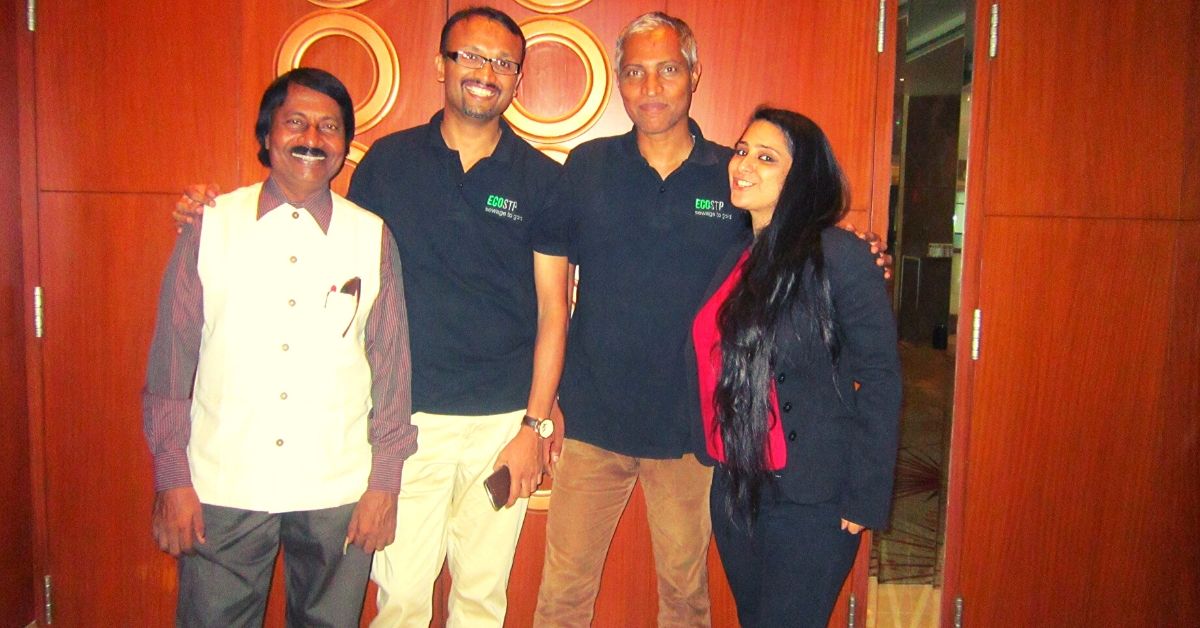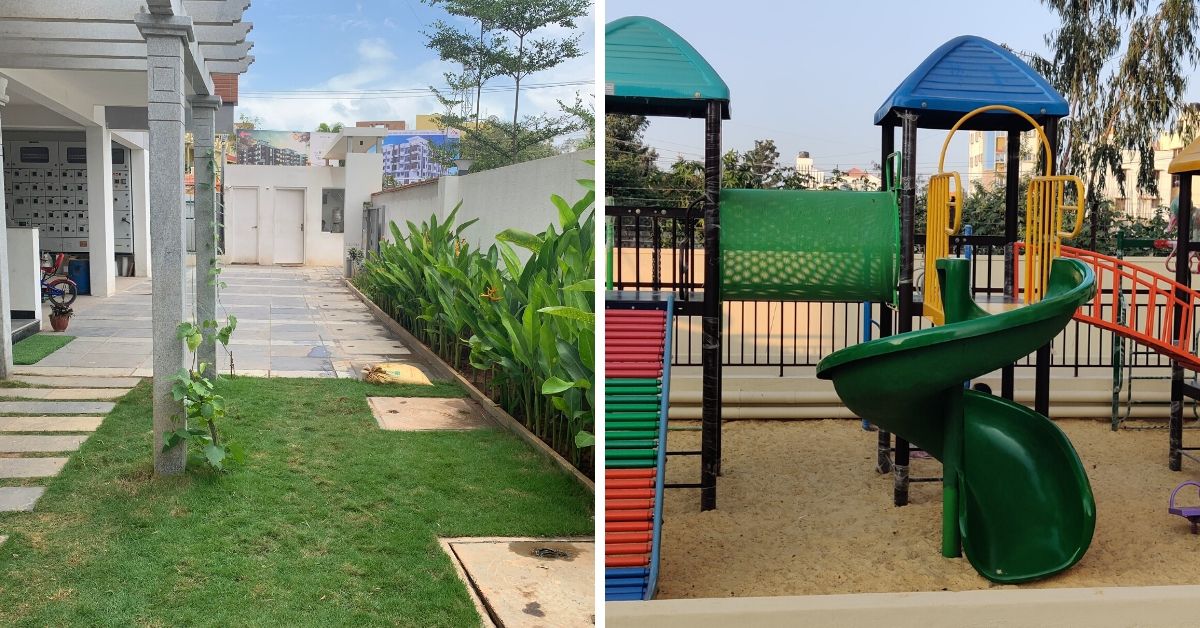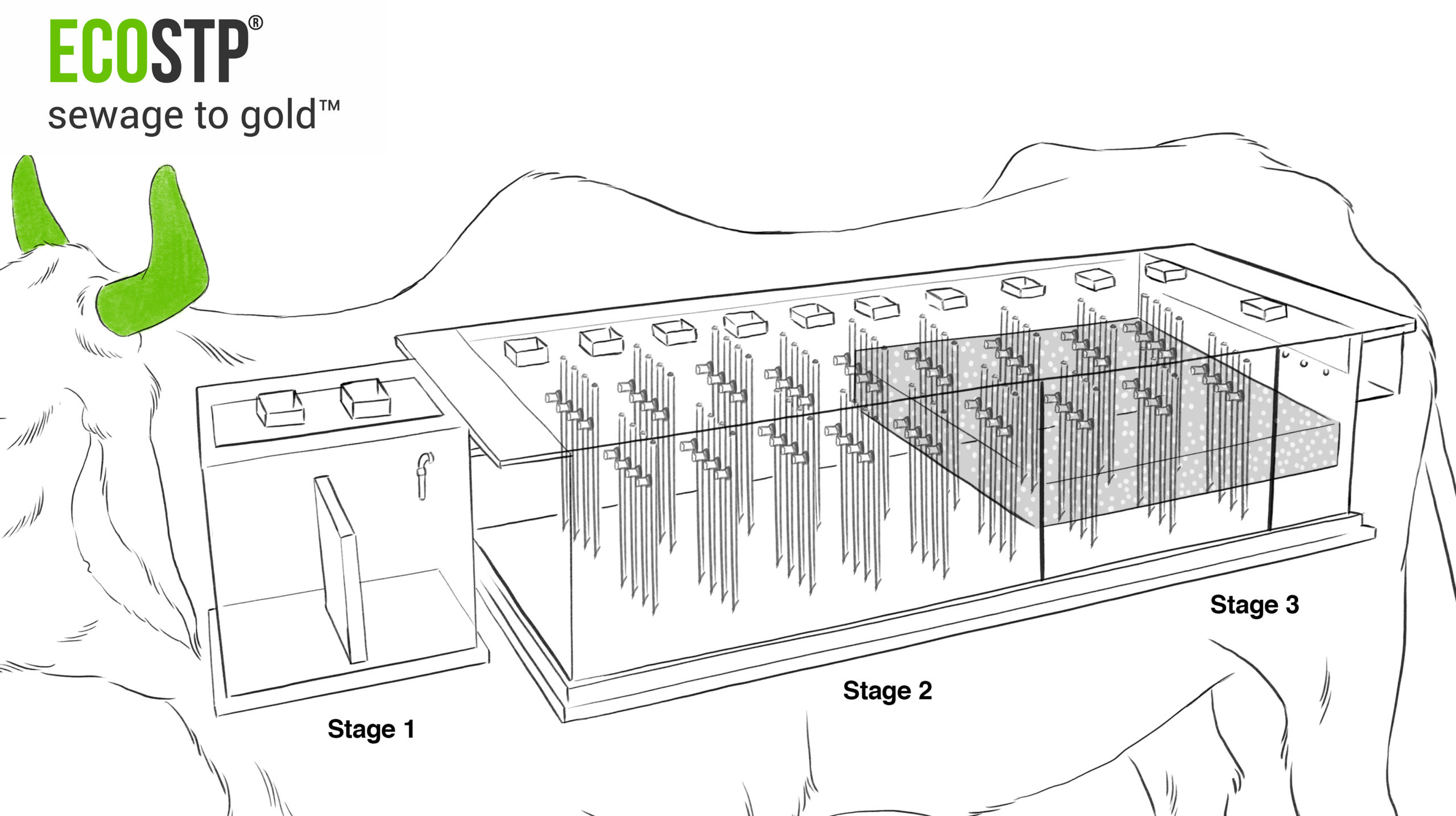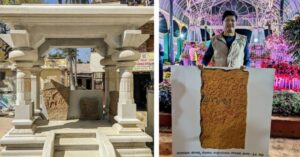Startup’s Zero-Power Tech Converts 59 Million Litres of Sewage into Reusable Water
This bio-mimicked Sewage Treatment Plant by ECOSTP runs on zero power, requires very low maintenance and most importantly it’s running cost is 85 per cent less.

It may be something as small as discarding a cigarette butt on the road or as huge as torching a forest, but if you look around, you will find at least one way in which we have harmed the environment. But what if instead of continually taking from nature, we learnt a thing or two from it and improved our lives without generating any carbon footprints?
This is precisely what ‘biomimicry’ (mimicking nature) is all about.
Many pioneering individuals and organisations are finding ways to replicate the functions of plants, microorganisms and animals in their tech-based inventions. Some prominent examples include the Kingfisher-inspired bullet train in Japan, Velcro, energy-efficient buildings inspired by termites and the biomimetic monsoon-proof landscape in Lavasa.
Joining this small yet growing faction is Bengaluru-based startup ECOSTP Technologies which has taken its inspiration from the functioning of a cow’s stomach to treat wastewater.
“The cow’s ruminant (multi-chambered) stomach converts grass into milk. We use the same method to convert sewage into reusable water by mimicking the animal’s digestion process. Our system uses microorganisms, plants, and gravel to treat wastewater,” Tharun Kumar, its co-founder and CEO, told The Better India.

The 3-year-old ISO-certified and Department of Industrial Policy & Promotion (DIPP) approved organisation was founded in 2017 by four friends: Kumar, a former IT Security expert; Simar Kohli, a hydro-sociologist; Dr E Muralidharan, a PhD holder in biomedical engineering and Praseed KK, who has 18 years of experience in product delivery and operations in product management.
Mentored by the Biomimicry Institute in Montana, USA, it has designed ‘zero power, zero operators’ Sewage Treatment Plants (STPs) for residential buildings and factories for onsite treatment of sewage.
What makes their patented STP different from the prevailing wastewater treatments is that it runs on zero power, requires very low maintenance. Most importantly, it’s running cost is 85 per cent cheaper. “Unlike a conventional STP, it does not need a motor, exhaust fans, pumps and labour,” adds Kumar.
It is also entirely safe for use, requires no operators and doesn’t leave any stench or odour behind.
A Polluted Lake: From Where It All Started
After working for over two decades in the software management sector, Kumar decided to quit the field eight years ago. He was triggered by the constant fires that used to rage in Bengaluru’s Varthur lake and wanted to do something about it.
“Nearly 40 per cent of our city’s untreated sewage enters lakes. While STP’s are a solution, they consume a lot of electricity. However, due to the power shortage in urban areas, they don’t run on full capacity. I wanted to come up with a decentralised solution to treat the sewage and reuse it to cut down Bengaluru’s water crisis,” he says. 
His skills and knowledge in technology drove him to find STPs that functioned without any power. “I came across various case studies where anaerobic STPs bio-mimicked cow’s digestion system. I spent nearly six years in research and development along with the other founders,” he adds.
The prototype, that was developed under the guidance of Brigade REAP accelerator programme, was successfully tested in a NABL accredited lab in 2017. The ECOSTP team was also mentored by the IIM-Ahmedabad CIIE Sheltertech Programme and the Innovation Leader Fellowship of Royal Academy of Engineering, UK.
ECOSTP is not the first company to use this technology. However, they modified the system to suit the needs of urban dwellers. “Although it takes double the space of a conventional STP, the design is flexible and it can be installed underground or a backyard,” mentions Kumar.
How It Works
Just like a cow’s stomach, this STP has four chambers to execute the process of anaerobic digestion.
Here’s the 4-Step process:
- Faecal water is collected in the first chamber where solid matters like plastic and sanitary napkins settle at the bottom.
- Using gravitational force, water travels to the second chamber through a series of baffle pipes. The wastewater is processed by anaerobic bacteria (made from cow dung). The bacteria feeds on all the contaminated materials.
- The relatively clean water then travels to the third chamber (Rumen digestor) where it passes through multiple filter mass and goes to the fourth chamber.
- The final chamber is filled with horizontal wetland with no roots, only gravel. The vascular plants and algal colonies remove pathogens and nutrients (nitrogen and phosphorus) from the water. The final result is clean non-potable water (which conforms to the Karnataka Pollution Control Board norms) that can be used for toilet flushing, car washing, and gardening (after disinfection).
ECOSTP offers varying capacities of STPs, starting from 8 KLD (kilolitres per day) to one MLD (million litres per day).
Likewise, the cost of the ECOSTP’s DIY installation kit ranges from Rs 4-9 lakh depending on the capacity. The civil work and installation is to be done by the builder or apartment dwellers.
The kit contains a detailed DIY lego drawing of the STP, custom bacteria (one-time addition to the chamber), filter media and quality checks.

“We conduct physical checks during installation and after completion, provide maintenance-related services like removing the sludge every once in two years. The return of investment compared to other STPs is less than two years,” adds Kumar.
Impact
Entering the market flooded with various STP models that are cheaper and require less space was a tough nut to crack.
“Although the organisation matched the safety norms, had heavy credentials and was backed by government approvals, convincing people that it runs without a motor was challenging. However, we have progressed steadily over time,” informs Kumar.
Starting with Bengaluru-based CoEvolve Estates, the organisation has 41 clients (factories and apartment buildings) spread across eight states.
Their first client, Suhail Rahman, MD and CEO of CoEvolve says, “As developers, we are in a position to decide how the community lives, and we should set an example of how to live a sustainable lifestyle. Thus, we chose the STP given by ECOSTP, which is maintenance and power free.”
Meanwhile, another client, Chaitra Saraf, founder of Zero Gravity Architects, was able to design a 100 per cent eco-friendly resort thanks to ECOSTP.
“My client wanted an eco-friendly resort in Chikmagalur, but we found STPs that consumed power or had chemicals. The sewage treatment solution by ECOSTP is not dependent on chemicals, power or operators and the best part was they designed in a way that allowed us to use locally available materials for its construction,” says Saraf.
Through its STPs, ECOSTP has treated a whopping 59 million litres of sewage and saved 96 Megawatt (MW) of power so far.
This nature-inspired innovation can not only save our water bodies from pollution but also reduce the problem of water shortage in urban spaces. Indeed, nature knows best!
All images are sourced from ECOSTP.
Get in touch with ECOSTP here
Also Read: How IIT-B’s Zero-Chemical Tech to Treat Wastewater Is Impacting Millions!
(Edited by Gayatri Mishra)
Like this story? Or have something to share?
Write to us: [email protected]
Connect with us on Facebook and Twitter.
This story made me
- 97
- 121
- 89
- 167
Tell Us More
We bring stories straight from the heart of India, to inspire millions and create a wave of impact. Our positive movement is growing bigger everyday, and we would love for you to join it.
Please contribute whatever you can, every little penny helps our team in bringing you more stories that support dreams and spread hope.



















